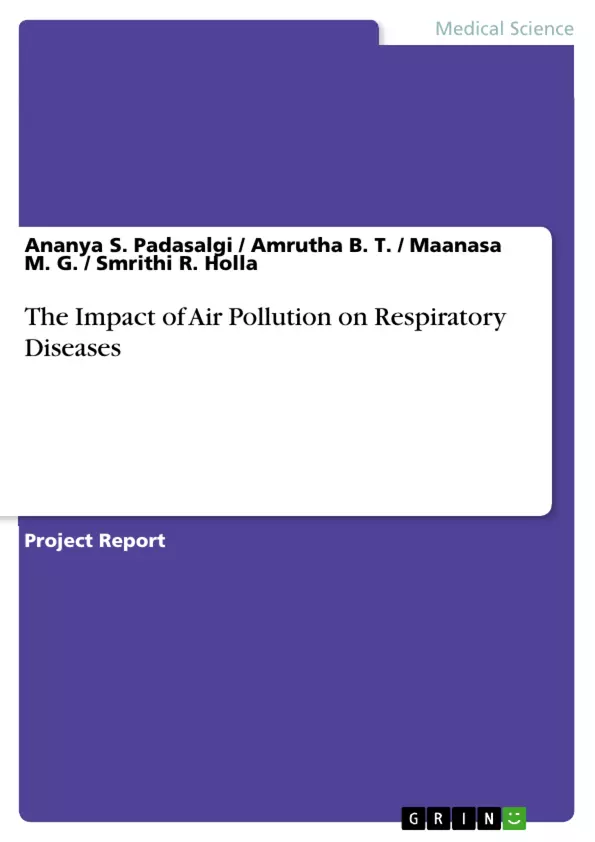This research investigates the intricate relationship between air pollution and respiratory health by integrating real-time air quality data with longitudinal health records. Using sophisticated statistical techniques, including multivariate regression and machine learning algorithms, we analyze the impact of key pollutants—such as PM2.5, PM10, NOx, and SO2—on the prevalence and severity of respiratory conditions. Our study not only identifies significant pollutant-health associations but also introduces a novel predictive model that assesses individual risk based on dynamic air quality metrics and personal health data. The model’s predictive accuracy offers a proactive tool for public health interventions, allowing for targeted health advisories and personalized prevention strategies. The findings enhance our understanding of air pollution’s multifaceted effects on respiratory health, providing crucial evidence to guide effective policy measures and improve health outcomes in affected populations.
Inhaltsverzeichnis (Table of Contents)
- Abstract
- Introduction
- Objective
- Methodology
- Literature Review
- Statistical Analysis
- Conclusion
- References
Zielsetzung und Themenschwerpunkte (Objectives and Key Themes)
This research aims to investigate the complex relationship between air pollution and respiratory health, using real-time air quality data and longitudinal health records. The study employs sophisticated statistical techniques to analyze the impact of various pollutants on respiratory conditions and develop a predictive model for individual risk assessment.
- The impact of specific air pollutants (PM2.5, PM10, NOx, SO2) on respiratory health.
- Development and validation of a predictive model for assessing individual risk based on air quality and personal health data.
- Identification of significant pollutant-health associations.
- Exploration of the complex dynamics between pollutant exposure and respiratory disease outcomes.
- Application of advanced statistical methods (multivariate regression and machine learning) for data analysis.
Zusammenfassung der Kapitel (Chapter Summaries)
Introduction: This chapter establishes the context by highlighting the growing concern over air pollution and its impact on respiratory health. It details the harmful effects of various pollutants and emphasizes the need for a more nuanced understanding of their impact on respiratory diseases.
Objective: This chapter outlines the study's specific goals, including the analysis of the relationship between air pollution and respiratory health through the integration of real-time air quality data and longitudinal health records. The aim is to develop a predictive model for assessing individual risk.
Methodology: This section describes the research methodology employed in the study, including the data sources, statistical techniques used, and the development of a predictive model.
Literature Review: This chapter presents a review of existing literature on the subject, providing background and context for the study's findings.
Statistical Analysis: This chapter details the statistical analysis conducted, including the methods used to analyze the data and identify significant associations between air pollutants and respiratory health outcomes.
Schlüsselwörter (Keywords)
Air pollution, respiratory diseases, PM2.5, PM10, NOx, SO2, multivariate regression, machine learning, predictive model, public health, respiratory health outcomes, individual risk assessment.
- Quote paper
- Ananya S. Padasalgi (Author), Amrutha B. T. (Author), Maanasa M. G. (Author), Smrithi R. Holla (Author), 2024, The Impact of Air Pollution on Respiratory Diseases, Munich, GRIN Verlag, https://www.hausarbeiten.de/document/1502994


